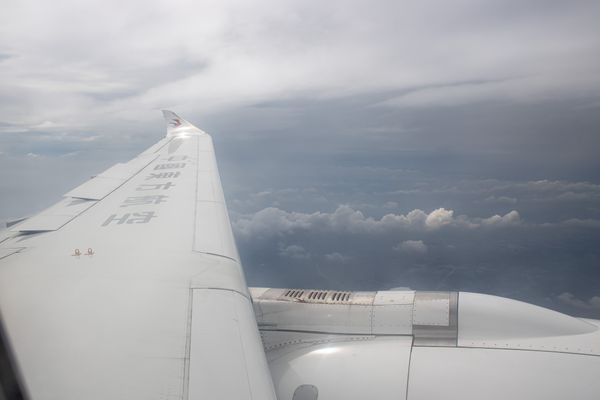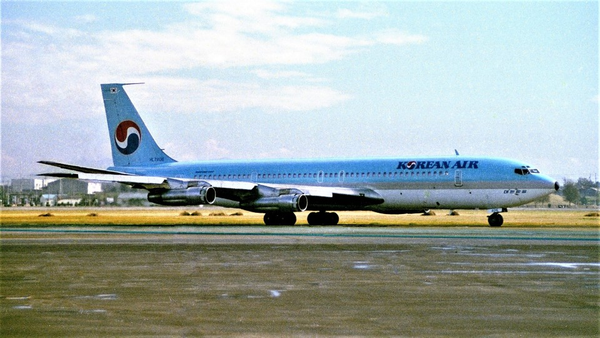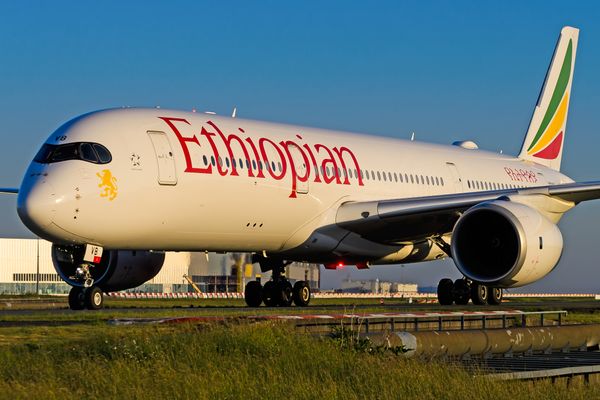The United Arab Emirates (UAE) has become one of the world's major players in the aviation industry over the past two decades. The UAE's two largest airlines, Emirates and Etihad Airways, are synonymous with global connectivity and major lifestyle brands. Millions of passengers connect through Dubai International Airport (DXB) and Abu Dhabi International Airport (AUH) each year on flights to destinations worldwide. Furthermore, Dubai and Abu Dhabi have established themselves as prominent business and leisure travel destinations.

Anyone interested in aviation or travel likely knows about the UAE's large presence in these two industries. Emirates and Etihad branding appear in stadiums and on jerseys for some of the world's most famous sports teams, including Arsenal and Manchester City. Major industry events, such as the 2023 Dubai Airshow from November 13 to 17, regularly occur in the UAE. Emirati airlines and airports regularly rank among the world's best due to their amenities and connectivity. Finally, UAE-based airlines are known for using the Airbus A380 extensively and offering extravagant first-class cabins with amenities such as private suites and onboard bars.
The UAE's Plans to Improve Airport Infrastructure
The UAE has outlined plans to build new airports and expand existing ones. These plans are important as Dubai and Abu Dhabi remain popular destinations for final and connecting flights. The current infrastructure needs to be improved for the UAE to stay competitive as a global aviation hub, especially as Saudi Arabia and Qatar compete to influence the region's aviation sector.
Abu Dhabi opened a new terminal at AUH on November 1 after a six-year delay. Terminal A was created to expand the airport's passenger capacity and get more airlines to offer nonstop flights to Abu Dhabi. The terminal has 28 airlines, including Etihad's new hub, and can accommodate up to 45 million passengers annually. In the upcoming second expansion phase, Abu Dhabi plans to expand the annual passenger capacity to 65 million and accommodate Etihad's expansion plans. The airport will be renamed Zayed International Airport in February 2024.
Terminal A's amenities include the following:
- Ability to handle 79 planes simultaneously and 11,000 passengers per hour
- One of the region's largest indoor public art features
- An X-shaped design with four piers inspired by Abu Dhabi's urban and natural landscapes
- Facial recognition technology to screen passengers
- A U.S. preclearance facility allowing passengers flying to the U.S. to complete immigration in Abu Dhabi
- Three Etihad lounges: Business Class, First, and Chauffeur

Dubai plans to replace DXB with an entirely new airport in the 2030s. This announcement came several months after reports surfaced that DXB would get a $1.6 billion to $2.7 billion expansion over the next few years. This expansion will likely continue because the new airport will not be complete for at least another ten years. Dubai Airports, the company behind this project, views a new airport as essential to accommodate growing passenger numbers.
In the short term, Dubai's priority is to expand DXB and Al Maktoum International Airport (DWC). DXB's ability to accommodate 118 to 120 million annual passengers is not enough for the demand, so Dubai's goal with DWC is to handle over 250 million passengers after its expansion. The developers anticipate that DWC will become the world's largest airport once DXB reaches peak capacity. The details about DWC's expansion are somewhat vague since Dubai Airports has not provided any updates in recent months.
As for DXB, Dubai Airports has outlined the following in the expanded airport:
- New lounges
- Security scanners that do not require passengers to remove liquids from their luggage
- Smart technology in all stages of the check-in, security, and boarding process
- A higher number of check-in kiosks
- Restaurants and coffee shops moved to the same area in each terminal, and more seats near each restaurant
It should be noted that DXB will not receive an entirely new terminal. Dubai Airports' goal with the expansion is to improve efficiency and the passenger experience. DXB still needs to operate efficiently over the next decade as Dubai continues to determine the future of its aviation industry.

The UAE's Commitment to Sustainable Aviation
The UAE has become a global leader in decarbonizing the aviation industry. The International Civil Aviation Organization (ICAO) has outlined plans for aviation to achieve net zero emissions by 2050. This goal is important because aviation is a major contributor to climate change, accounting for 2% of global carbon emissions. The UAE's reputation for aviation, especially through its airports and airlines, allows it to lead the industry's transition to a more sustainable future.
The United Nations (UN) held talks in Dubai from November 20 to 24 with more than 100 countries to discuss reducing emissions in aviation. ICAO, a specialized UN agency, established a target for a 5% reduction in carbon emissions by 2030. The aviation sector plans to meet this target mainly through sustainable aviation fuel (SAF) since other technologies, like electric aircraft, will not be fully operational by 2030.
This meeting happened the week before COP28, the UN's annual climate summit, with this year's event happening in Dubai from November 30 to December 12. Since COP28 does not directly cover aviation, it made sense for the countries to have a separate meeting. Multiple nations outlined plans to domestically produce SAF using their natural resources, such as palm oil. The aviation sector estimates that developing SAF production worldwide will cost between $1.45 trillion and $3.2 trillion. International cooperation is essential to meet the 2030 and 2050 targets, especially for developing nations that require more financing and improved fuel infrastructure.

This meeting happened the week before COP28, the UN's annual climate summit, with this year's event happening in Dubai from November 30 to December 12. Since COP28 does not directly cover aviation, it made sense for the countries to have a separate meeting. Multiple nations outlined plans to domestically produce SAF using their natural resources, such as palm oil. SAF can reduce carbon emissions by up to 85% compared to traditional jet fuel powered by fossil fuels.
The aviation sector estimates that developing SAF production worldwide will cost between $1.45 trillion and $3.2 trillion. International cooperation is essential to meet the 2030 and 2050 targets, especially for developing nations that require more financing and improved fuel infrastructure.
Emirates and Etihad also have plans to decarbonize their operations, mostly by using SAF to fuel their flights. Emirates recently became the world's first airline to use SAF on an Airbus A380 flight, with one of the aircraft's four engines being powered exclusively by SAF. The demonstration flight occurred simultaneously with the ICAO summit, likely to showcase the UAE as a global leader in aviation innovation.
Emirates started using SAF on regular commercial flights in October after a successful SAF-powered demonstration flight on a Boeing 777-300ER earlier this year. The first flight, EK 412, flew from DXB to Sydney Airport (SYD) on October 24 using 40% SAF and 60% traditional jet fuel. The airline has received 315,000 gallons of blended SAF from Shell Aviation and will receive over 3 million gallons from Neste over the next two years. Emirates is currently leading among airlines in the Middle East and Africa regarding SAF supply.
Etihad started using SAF on its flights in November 2022. The first flight, EY 871, flew from AUH to Tokyo Narita Airport (NRT) using approximately 40% SAF and 60% traditional jet fuel. The carrier used SAF from Neste and Itochu for this flight and later signed distribution deals with World Energy and Twelve. Although Etihad has yet to conduct as many SAF flights as Emirates, the airline aims to reduce carbon emissions by 50% by 2035.

Dubai and Abu Dhabi's Continued Global Leadership in Aviation
The above developments showcase the UAE's continued commitment to global leadership in the aviation industry. Passengers worldwide are eager to fly on Emirates and Etihad through Dubai and Abu Dhabi, respectively. The two cities are known for their tourist attractions and nonstop connectivity to airports on six continents. Aside from the UAE appearing on many people's travel bucket lists, UAE-based airlines have become global cultural icons for their innovative amenities and sponsoring famous sports and entertainment brands.
Sufficient airport infrastructure is essential as the UAE continues to see strong travel numbers. Travel analysis company ForwardKeys ranked the UAE among the world's top ten destinations with the strongest growth in international visitors this year compared with 2019. This data highlights the continued recovery of tourism and aviation after the COVID-19 pandemic and also the importance of decarbonizing aviation amid high travel demand. The UAE is leading in helping the industry reach net zero by 2050 through hosting international summits and its airlines using cleaner fuels for their flights.
Gulf Air and Turkish Airlines Expand Codeshare Partnership » Air France Flight Drops Nearly 4,000 Feet Per Minute, Diverts to Lyon » IndiGo Unveils Delhi–London Expansion and First A321XLR Launch »
Comments (0)
Add Your Comment
SHARE
TAGS
NEWS UAE United Arab Emirates Emirates Airline Etihad Dubai Abu Dhabi SAF Sustainability ExpansionRECENTLY PUBLISHED
 VIDEO: What It's Like Onboard China's COMAC C919
We flew onboard China Eastern's COMAC C919 to experience China's homegrown narrow-body up close. From seat comfort to cabin layout to noise levels to tech: how does it really compare with the Boeing 737 and Airbus A320? This review puts all three workhorses under the same spotlight.
TRIP REPORTS
READ MORE »
VIDEO: What It's Like Onboard China's COMAC C919
We flew onboard China Eastern's COMAC C919 to experience China's homegrown narrow-body up close. From seat comfort to cabin layout to noise levels to tech: how does it really compare with the Boeing 737 and Airbus A320? This review puts all three workhorses under the same spotlight.
TRIP REPORTS
READ MORE »
 KAL858: The North Korean Bombing that Shocked the World
Among the 99 passengers boarding Korean Air Flight 858 on November 29, 1987, few could imagine their journey would end as one of aviation's darkest mysteries.
STORIES
READ MORE »
KAL858: The North Korean Bombing that Shocked the World
Among the 99 passengers boarding Korean Air Flight 858 on November 29, 1987, few could imagine their journey would end as one of aviation's darkest mysteries.
STORIES
READ MORE »
 Ghost Networks: The Rise, Fall, and Revival of Fifth-Freedom Flights
Fifth-freedom flights — routes where an airline flies between two countries outside its home base — have always lived in aviation's twilight zone. We chart their rise, their near-disappearance, and the surprising markets where they still thrive today. Then we take you on board a special Seoul-Tokyo fifth-freedom flight to show how the experience stacks up against a typical regional carrier.
TRIP REPORTS
READ MORE »
Ghost Networks: The Rise, Fall, and Revival of Fifth-Freedom Flights
Fifth-freedom flights — routes where an airline flies between two countries outside its home base — have always lived in aviation's twilight zone. We chart their rise, their near-disappearance, and the surprising markets where they still thrive today. Then we take you on board a special Seoul-Tokyo fifth-freedom flight to show how the experience stacks up against a typical regional carrier.
TRIP REPORTS
READ MORE »



